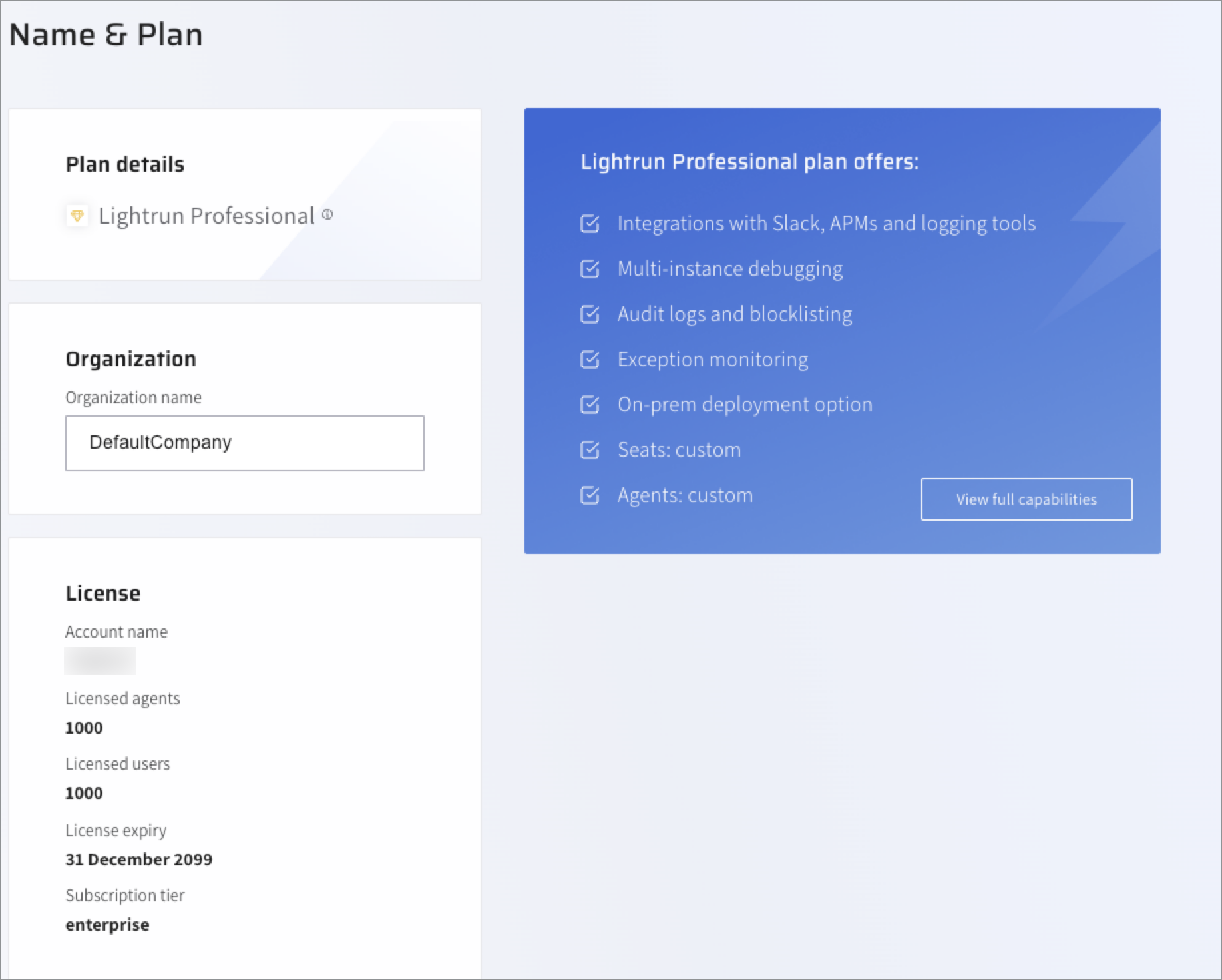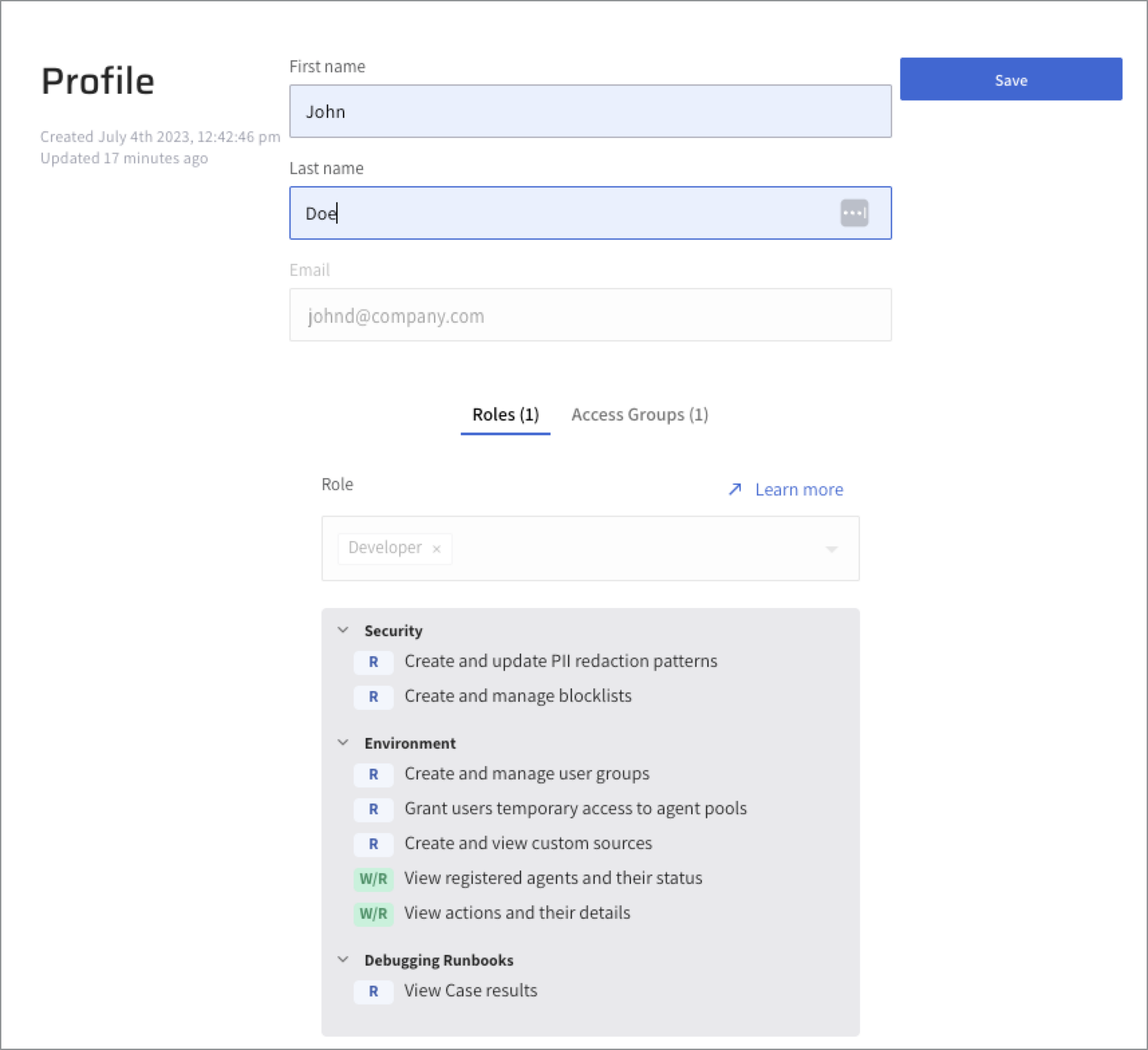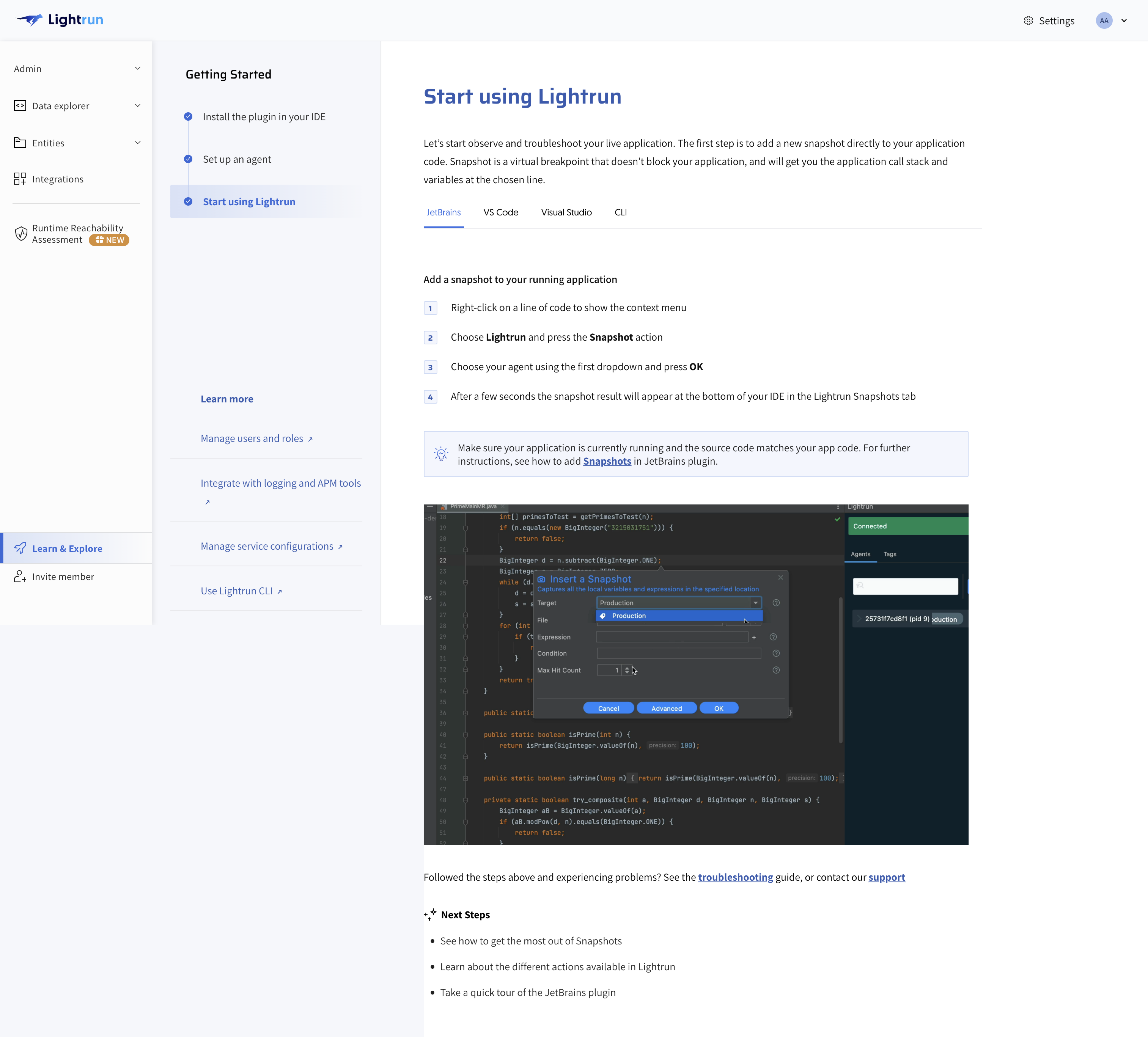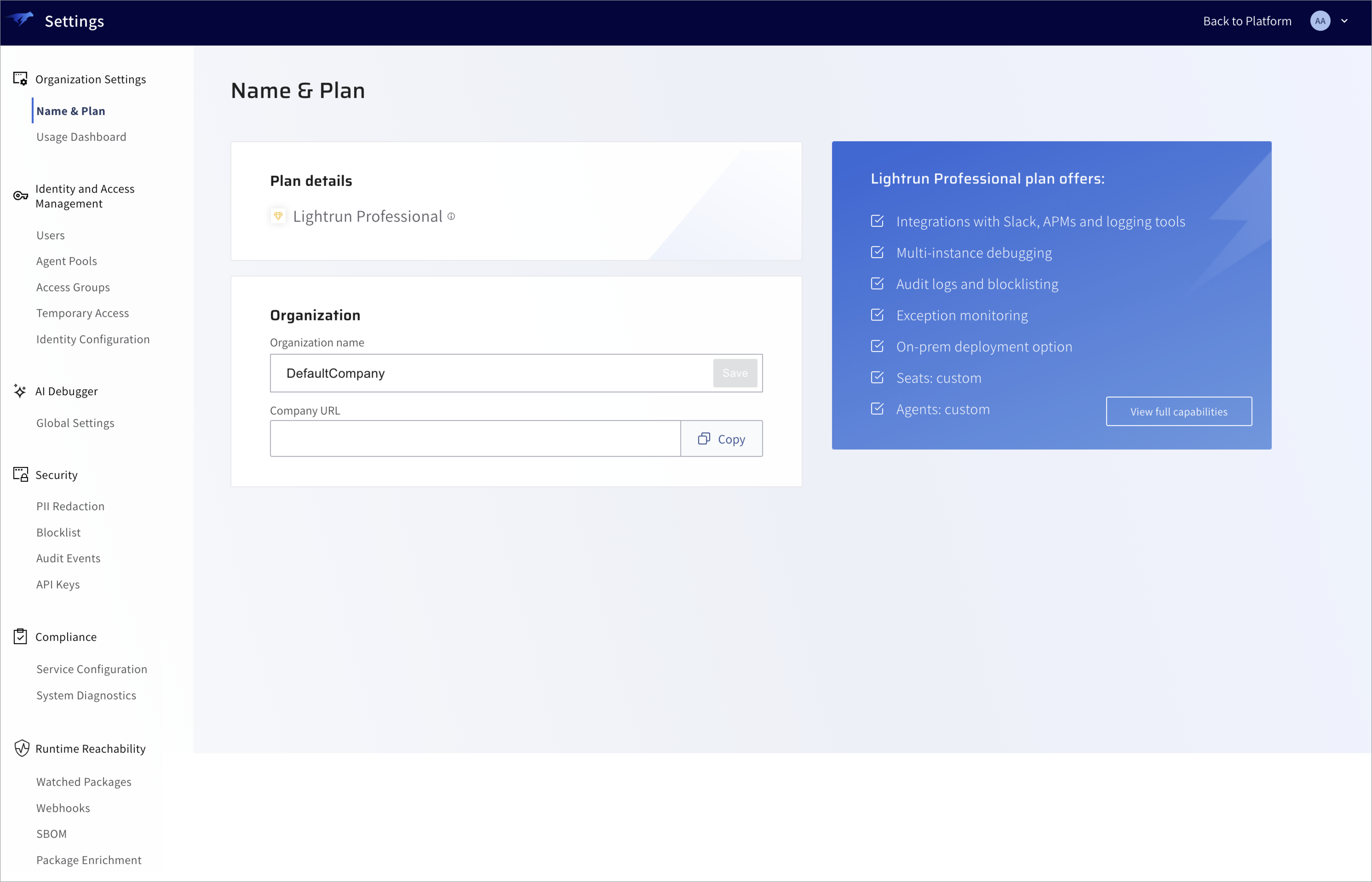Lightrun Management Portal overview🔗
This topic applies to the Lightrun Management Portal and it's persona-based roles, introduced in version 1.70.2.
The Lightrun Management Portal is the web-based administrative and monitoring portal for Lightrun’s observability and instrumentation platform. It serves as the user-facing interface for the Lightrun Management Server, giving administrators, developers, and DevOps teams centralized visibility and control across all runtime instrumentation activities.
Note
The features and options available in the Lightrun Management Portal depend on your organization’s license plan, the features that are enabled, and whether Role-Based Access Control (RBAC) is enabled. Access and visibility also vary based on the roles assigned to each user.
The Lightrun Management Portal consists of two main areas:
- Platform area: Contains all operational categories accessible from the main navigation bar.
- Settings area: Used by administrators to configure organization-level and system settings.
Access the Lightrun Management Portal🔗
To sign in to the portal, go to your organization’s Lightrun URL. Most users sign in either through SSO (such as Okta or Azure AD) or directly with their email and password. If you’re not sure which login method applies to you, contact your system administrator or check the Login methods overview for supported options.
View company and license information🔗
You can view your company name and license details, including the number of agents and users, license expiry date, and subscription tier.

View user information🔗
You can view your profile settings, change your password, and sign out of the portal.
-
To view your information, click your initials located on the top menu bar.

-
Select Profile from the drop-down menu to view basic user information, assigned roles, and Access Group memberships.

All users when added to the portal are granted the
Developerrole by default.
Platform area🔗
The main platform area is where users interact with their organization’s observability data, agents, and integrations.

The following sections list the supported main categories and available features.
Getting Started🔗
Provides a guided onboarding experience, including setup steps for the Lightrun Plugin and Lightrun Agent, customized by IDE and development language.
Data Explorer🔗
Displays existing Lightrun Team Actions for your organization. You can view and filter Snapshots, Logs, and a Lightrun usage dashboard based on configuration.
Entities🔗
Access and manage core resources:
- Custom Sources: Create or delete sources and view attached agents.
- Agents: Monitor and manage running agents.
- Tags: Organize actions and agents.
- Action Information: Review details like action type, status, location, and author.
Integrations🔗
Displays all supported Lightrun Integrations, their current status, and access to configuration settings (e.g., Slack, Datadog, etc.).
Runtime Reachability Assessment🔗
Displays existing packages and classes currently loaded in real time.
Runtime Reachability Assessment helps prioritize CVEs (Common Vulnerabilities and Exposures) by showing which components are actively in use, highlighting the urgency for remediation. Requires Runtime Reachability to be configured in the Settings section by your administrator. Provides actionable insights that bridge observability and security analysis.
Settings area🔗
The Settings area is organized into categories based on the features available in your organization. Each category contains related configuration options and system-level controls.

The following tables list the supported main categories and available features.
Organization Settings🔗
| Feature | Description |
|---|---|
| Name and Plan | Displays organization name, license information, and plan details. |
| Usage Dashboard | Provides a high-level overview of usage metrics and license utilization. |
Identity and Access Management🔗
| Feature | Description |
|---|---|
| Users | Manage users based on RBAC or Non-RBAC models. |
| Agent Pools | Organize and manage Agent Pools for specific environments. |
| Access Groups | Manage groups with persona-based roles in an RBAC environment. |
| Temporary Access | Grant time-limited access to users for support or demos. |
| Identity Configuration | Configure login methods, self-service registration, and provisioning types (e.g., SCIM). |
AI Debugger🔗
| Feature | Description |
|---|---|
| Global Settings | Configure organization-wide AI Debugger preferences. |
Security🔗
| Feature | Description |
|---|---|
| PII Redaction | Manage policies for redacting sensitive data. |
| Blocklist | Define restricted terms or patterns to prevent collection. |
| Audit Events | View logs of key user and system actions. |
| API Keys | Create, manage, and rotate API keys for integrations. |
Compliance🔗
| Feature | Description |
|---|---|
| Service Configuration | Manage compliance-related service settings. |
| System Diagnostics | Access diagnostic tools and logs for troubleshooting. |
Runtime Reachability🔗
| Feature | Description |
|---|---|
| Watched Packages | Manage packages being monitored for reachability. |
| Webhooks | Configure webhook notifications and event triggers. |
| SBOM | View the Software Bill of Materials (SBOM) for monitored components. |
| Package Enrichment | Enable metadata enrichment for tracked packages. |